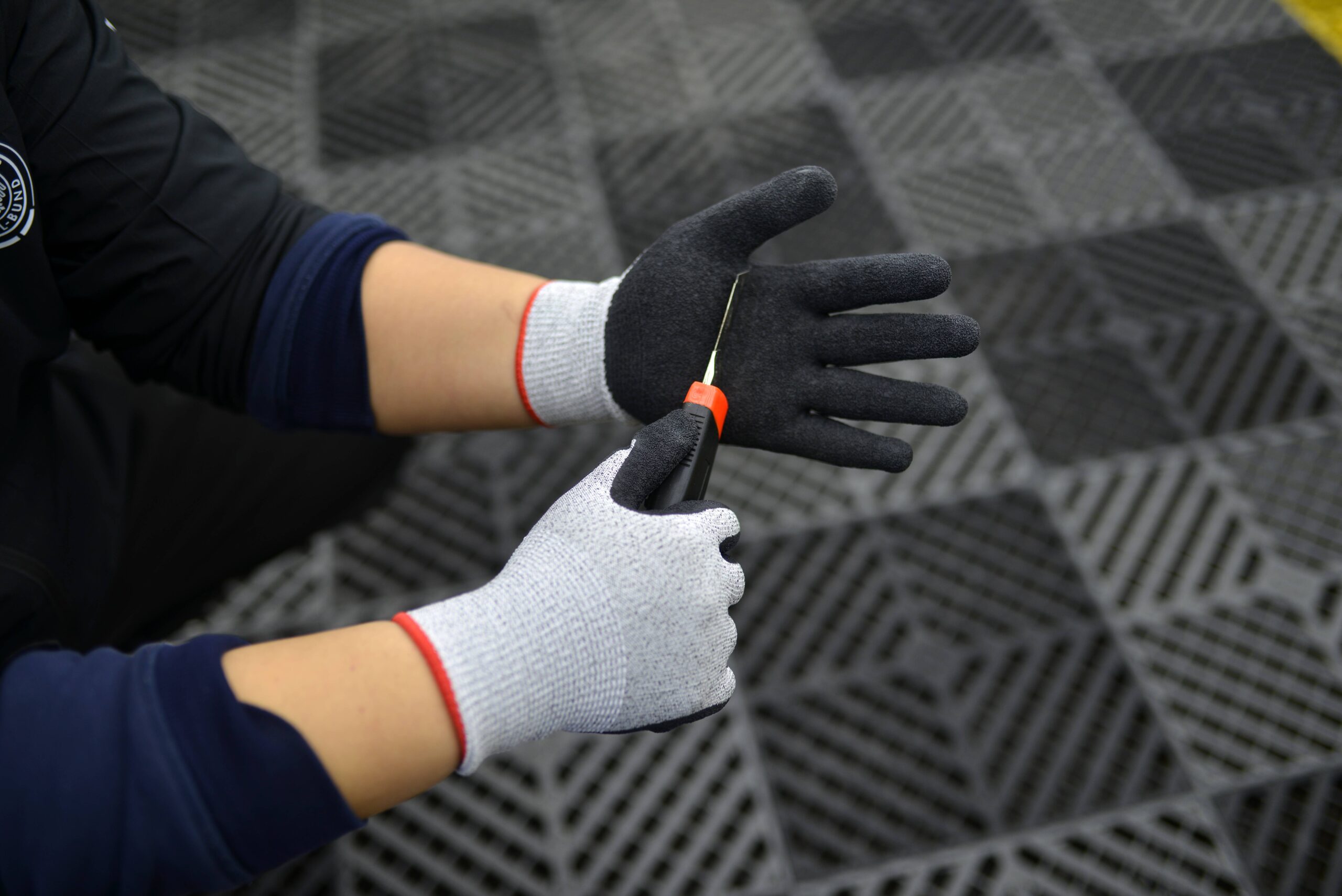 Accidents can happen unexpectedly while working, making it crucial to take every possible precaution to protect yourself and those around you. One simple yet effective method is to wear appropriate work gloves. They not only protect your hands from cuts, burns, and other injuries but also come with various features that help you work more efficiently and safely.
Accidents can happen unexpectedly while working, making it crucial to take every possible precaution to protect yourself and those around you. One simple yet effective method is to wear appropriate work gloves. They not only protect your hands from cuts, burns, and other injuries but also come with various features that help you work more efficiently and safely.
Work gloves provide a sturdy barrier when your skin comes into contact with hazardous materials. They can also improve your grip on tools and machinery, reducing the risk of slips, trips, and falls.
6 Types of the Safest Work Gloves
Cotton Gloves
Cotton gloves are made from cotton or a cotton-blend fabric. They are lightweight, comfortable, warm, and breathable, reducing the risk of hand sweating and discomfort. They are suitable for various work environments and are relatively inexpensive compared to other types of work gloves, making them cost-effective. Additionally, since cotton is a natural material, these gloves are more environmentally friendly than synthetic alternatives.
Industries that benefit from cotton gloves include:
- Electronics: Protecting delicate components from contamination and static discharge.
- Assembly: Handling small parts and components.
- Agriculture: Protecting hands from dirt, dust, and other contaminants.
- Food Service: Preventing contamination and protecting food from harmful bacteria.
Common types of cotton gloves include:
- Knit Gloves: Made from a blend of cotton and polyester, these gloves are lightweight and breathable.
- Canvas Gloves: Made from heavy-duty cotton fabric, ideal for handling rough materials and heavy objects.
Inspection Gloves: Made from lightweight cotton or nylon, used to protect delicate materials from fingerprints and contamination.
Cut-Resistant Gloves
Cut-resistant gloves are typically made from high-strength materials like Kevlar and Dyneema, designed to protect the wearer’s hands from cuts and tears. They are highly durable, can be reused, and withstand contact with sharp objects, reducing the risk of injuries and downtime.
Industries that benefit from cut-resistant gloves include:
- Manufacturing: Preventing cuts from sharp tools and machinery.
- Construction: Handling glass, metal, or other sharp materials.
- Food Processing: Protecting workers’ hands from sharp knives and other cutting tools.
- Glass Handling: Protecting hands from broken glass.
Common types of cut-resistant gloves include:
- Kevlar Gloves: Made from Kevlar fibers and other synthetic materials, highly durable and cut-resistant.
- Dyneema Gloves: Made from high-strength polyethylene fibers, lighter and more flexible than Kevlar.
- Stainless Steel Mesh Gloves: Made from flexible stainless steel mesh, offering strong cut and puncture resistance.

Waterproof Gloves
Waterproof gloves are made from high-quality waterproof materials, designed to keep hands dry and protected from wet environments. They provide a better grip on wet or slippery surfaces.
Industries that benefit from waterproof gloves include:
- Fishing: Used by fishermen for various activities.
- Food Processing: Handling wet or moist materials.
- Agriculture: Handling wet soil, plants, or other materials.
- Outdoor Activities: Suitable for hiking, camping, and kayaking.
Common types of waterproof gloves include:
- PVC Gloves: Made from polyvinyl chloride, completely waterproof.
- Neoprene Gloves: Made from synthetic rubber, offering strong resistance to water and other liquids.

Anti-Vibration Gloves
Anti-vibration gloves are designed to reduce the vibration transmitted to the wearer’s hands when using power tools or heavy machinery. They also offer protection against cuts, impacts, and abrasions, and provide high dexterity, reducing the risk of hand-arm vibration syndrome (HAVS).
Industries that benefit from anti-vibration gloves include:
- Power Tools: For workers using tools like jackhammers, drills, and grinders.
- Heavy Machinery: For workers operating bulldozers, cranes, and forklifts.
- Construction: For workers using vibrating tools like concrete saws and compactors.
Common types of anti-vibration gloves include:
- Full-Finger Gloves: Cover the entire hand, offering maximum vibration protection.
- Fingerless Gloves: Protect the palm and base of the fingers while maximizing dexterity.
- Gel-Padded Gloves: Have gel pads in the palms and fingers to absorb and reduce vibrations.

Insulated Gloves
Insulated gloves provide warmth and comfort, protecting hands from cold-related injuries while improving grip. They are used by workers exposed to cold environments, such as outdoor work or cold storage.
Industries that benefit from insulated gloves include:
- Power Line Work: Linemen need insulated gloves to prevent electric shocks.
- Outdoor Work: Construction workers or gardeners working in cold conditions.
- Cold Storage: Workers in warehouses or food processing plants.
- Ski Resorts: Workers like lift operators or ski patrol.
Common types of insulated gloves include:
- Thermal Lined Gloves: Provide warmth with a thermal lining.
- Waterproof Gloves: Keep hands warm and dry in wet or snowy conditions.
- Heavy-Duty Gloves: Designed for extreme cold, offering maximum warmth and protection.

Leather Gloves
Leather gloves are made from animal hides, typically cowhide, sheepskin, or deerskin. They are known for their durability, abrasion resistance, cut resistance, and puncture resistance. Leather gloves are comfortable and offer good thermal insulation, making them popular across many industries.
Industries that benefit from leather gloves include:
- Construction: Protecting hands from abrasions, cuts, and punctures while handling heavy materials and sharp tools.
- Welding: Resistant to heat and sparks, making them popular among welders.
- Manufacturing: Handling sharp materials and heavy machinery.
- Landscaping: Handling thorny plants and sharp tools.
Common types of leather gloves include:
- Driver Gloves: Made from soft leather, offering good flexibility and grip.
- Welding Gloves: Made from heavy-duty leather to protect against sparks and molten metal.
Work Gloves: Made from durable leather, protecting against abrasions, cuts, and punctures.
Each type of work glove has its advantages. Choosing the right gloves for your needs is crucial to ensure maximum protection and safety. If you have any concerns or questions about gloves or wish to make a purchase, please contact us. We are always here.
How to Measure Glove Sizes – Source: AIBON
Latex gloves– Source: AIBON
Safety gloves– Source: AIBON
Working gloves– Source: AIBON

